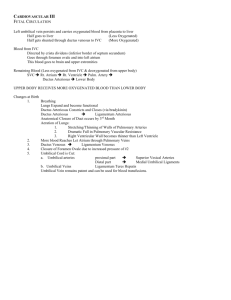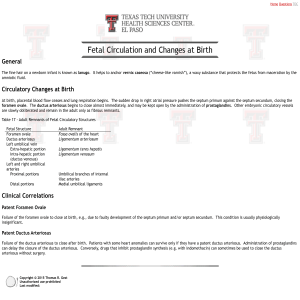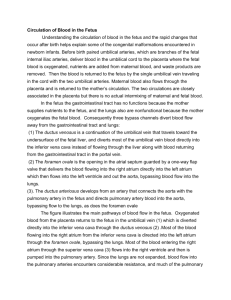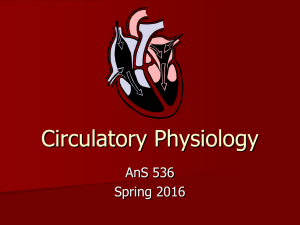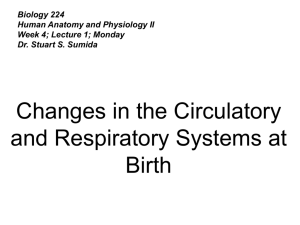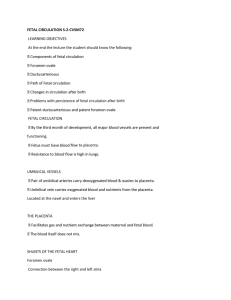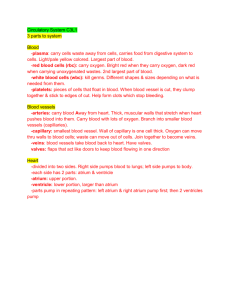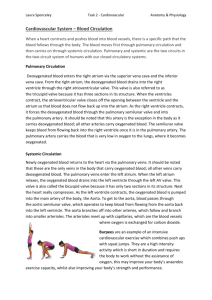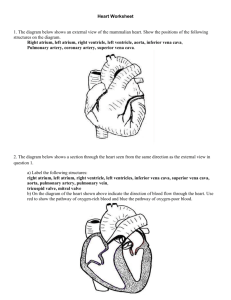Fetal circulation overview
advertisement
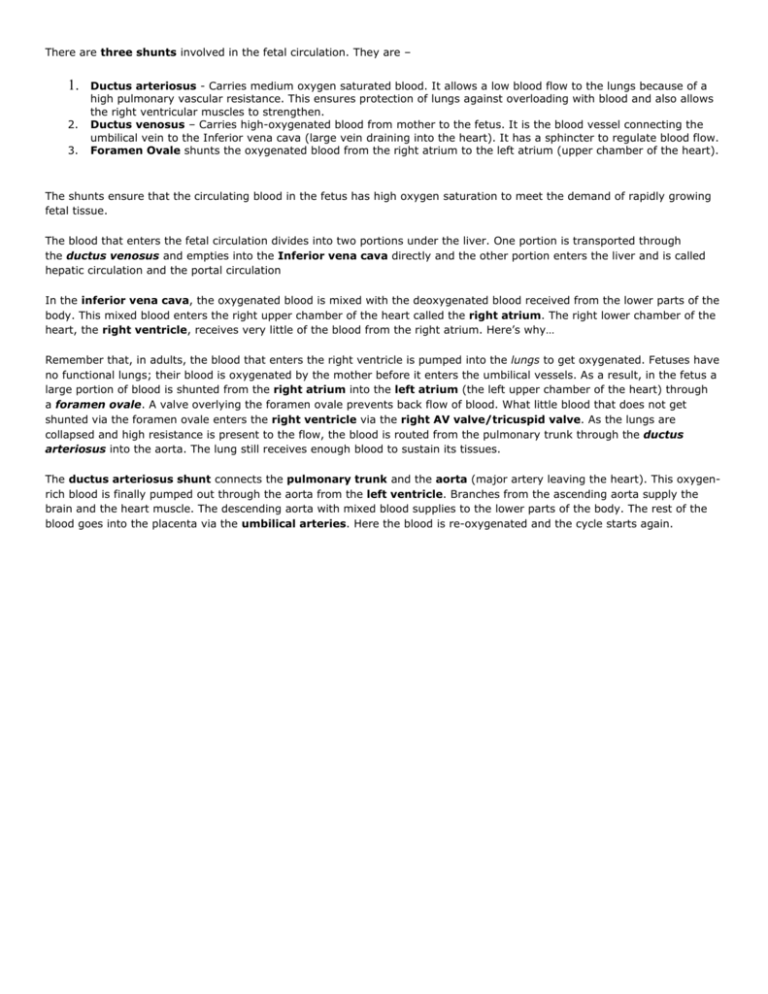
There are three shunts involved in the fetal circulation. They are – 1. 2. 3. Ductus arteriosus - Carries medium oxygen saturated blood. It allows a low blood flow to the lungs because of a high pulmonary vascular resistance. This ensures protection of lungs against overloading with blood and also allows the right ventricular muscles to strengthen. Ductus venosus – Carries high-oxygenated blood from mother to the fetus. It is the blood vessel connecting the umbilical vein to the Inferior vena cava (large vein draining into the heart). It has a sphincter to regulate blood flow. Foramen Ovale shunts the oxygenated blood from the right atrium to the left atrium (upper chamber of the heart). The shunts ensure that the circulating blood in the fetus has high oxygen saturation to meet the demand of rapidly growing fetal tissue. The blood that enters the fetal circulation divides into two portions under the liver. One portion is transported through the ductus venosus and empties into the Inferior vena cava directly and the other portion enters the liver and is called hepatic circulation and the portal circulation In the inferior vena cava, the oxygenated blood is mixed with the deoxygenated blood received from the lower parts of the body. This mixed blood enters the right upper chamber of the heart called the right atrium. The right lower chamber of the heart, the right ventricle, receives very little of the blood from the right atrium. Here’s why… Remember that, in adults, the blood that enters the right ventricle is pumped into the lungs to get oxygenated. Fetuses have no functional lungs; their blood is oxygenated by the mother before it enters the umbilical vessels. As a result, in the fetus a large portion of blood is shunted from the right atrium into the left atrium (the left upper chamber of the heart) through a foramen ovale. A valve overlying the foramen ovale prevents back flow of blood. What little blood that does not get shunted via the foramen ovale enters the right ventricle via the right AV valve/tricuspid valve. As the lungs are collapsed and high resistance is present to the flow, the blood is routed from the pulmonary trunk through the ductus arteriosus into the aorta. The lung still receives enough blood to sustain its tissues. The ductus arteriosus shunt connects the pulmonary trunk and the aorta (major artery leaving the heart). This oxygenrich blood is finally pumped out through the aorta from the left ventricle. Branches from the ascending aorta supply the brain and the heart muscle. The descending aorta with mixed blood supplies to the lower parts of the body. The rest of the blood goes into the placenta via the umbilical arteries. Here the blood is re-oxygenated and the cycle starts again.

